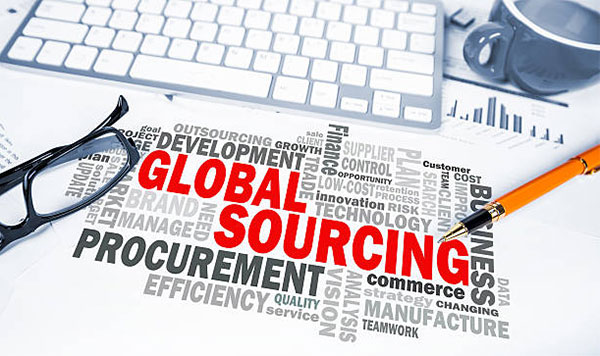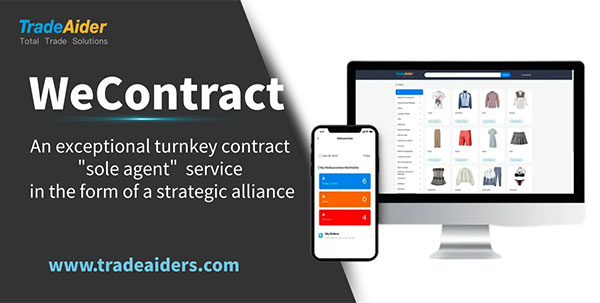Global sourcing refers to the leveraging global resources to search for suppliers worldwide, looking for products (goods and services) of the best quality and reasonable price. The global sourcing model breaks through the barriers of geography, language, and culture, utilizing the resources and market advantages of various parts of the world to achieve cost savings, quality improvement, supply chain optimization, and risk diversification. Global sourcing usually involves cross-border trade activities, requiring procurement personnel to have knowledge and experience in international trade, able to handle complex issues such as customs, taxes, and currency exchange. Global sourcing also needs to consider the culture, laws, and business practices of different countries to ensure the smooth progress of procurement activities.

With the acceleration of globalization and the development of technology, global sourcing has become increasingly common. Many companies establish global supply chains to reduce costs, improve efficiency, and gain broader market opportunities. Global sourcing is not only limited to the procurement of goods, but also includes the global procurement of services, technology, knowledge, and other resources.
In the era of globalization, companies face competition and industry challenges from all over the world. In order to enhance competitiveness, reduce costs, and gain broader market opportunities, many companies are shifting their production factor procurement strategies from regional sourcing to global sourcing.
The formation of global sourcing is mainly driven by the following key factors:
1. Cost and quality drive
While pursuing cost optimization, companies are also seeking quality assurance. Global sourcing allows companies to choose the lowest-cost and quality-assured suppliers from around the world. For example, some regions may have lower product costs due to advantages in labor costs, raw material costs, or other production factors, attracting international buyers to purchase.
2. Global seeking of resources and technology
Global sourcing enables companies to access resources and advanced technologies from around the world. Companies may not be able to obtain certain specific raw materials, technologies, or products domestically, but through global sourcing, they can acquire these necessary resources and technologies from foreign suppliers.
3. Global operation and market competition
With the globalization of business operations, procurement activities must also adapt to this trend. Global sourcing supports the company's globalization strategy, helping it enter new markets and enhance its international competitiveness. The fierce competition in the global market also prompts companies to seek higher-quality suppliers through global sourcing to enhance the competitiveness of their products.
4. Supply chain optimization and risk management
Global sourcing helps companies build a more flexible and efficient supply chain. By establishing supplier networks in different regions, companies can better respond to potential risks such as market fluctuations and natural disasters, ensuring the stability of the supply chain.
5. Driven by policy and economic environment
The opening of international trade policies and the integration of the global economy have provided enterprises with more procurement options. In addition, some countries may attract foreign enterprises to purchase their domestic products or services by offering tax incentives, investment incentives and other policy measures.
The formation of global sourcing is the result of the combined effects of many factors, including cost and quality considerations, global demand for resources and technology, global business strategies, optimization of supply chain management, and the impact of international economic and policy environments. Global sourcing is not an easy task, as it involves many complex links and risks.
In global sourcing, choosing the right supplier is a complex and important process. Here are some suggested steps and considerations that may help you make a relatively informed choice:
1. Define requirements and standards
Enterprises need to clarify their procurement needs, including product specifications, quality requirements, delivery time, price budget, etc. Based on these goals, companies can formulate corresponding procurement strategies, such as centralized procurement, decentralized procurement, or mixed procurement. Clear goals and strategies help companies maintain a clear direction in the global sourcing process. Set specific criteria for evaluating suppliers, such as product quality, delivery reliability, price competitiveness, after-sales service, etc.
2. Market research and preliminary screening
Understand the market situation of global suppliers through industry reports, market research or professional consulting institutions. Use internet searches, industry exhibitions, professional associations and other channels to collect information on potential suppliers. Initially select several suppliers that meet basic requirements as candidates. But sometimes buyers can find it difficult to trade directly with the manufacturers due to difficult factors like wide product ranges, complicated styles, small quantity, short lead time and tough prices, etc. In this case a GOOD agent is helpful for buyers.
TradeAider is a NEW style agent who can make the best use and managing of the over 95% factories which do not have English speaking staff and therefore do not have chance to trade directly with buyers but can be more competitive in prices than those trading with buyers directly. Therefore helping buyers to make easy and profitable soucing business.

3. In-depth evaluation and comparison
Conduct in-depth background checks on candidate suppliers, including financial status, production capacity, quality management system, etc. Require suppliers to provide samples or conduct trial production to assess their product quality and production capacity. Examine the supplier's delivery history and reliability, as well as after-sales service records. Compare the prices, quality, delivery time and other key factors of different suppliers, as well as their willingness to cooperate and flexibility.
4. On-site audit and verification
Conduct on-site visits to the selected suppliers to observe their production facilities, management processes, quality control systems, etc. Communicate with the management and employees of the suppliers to understand their corporate culture, business philosophy, and development strategy. Through TradeAider's vast network of 80,000 product development and quality control specialists worldwide, TradeAider can dispatch professional QC teams to conduct on-site evaluations of suppliers. This includes assessing production qualifications, factory conditions, production equipment, production capacity, personnel allocation, quality management systems, etc., ensuring that buyers can make their purchases with confidence.
5. Comprehensive evaluation and decision-making
Based on the collected information and evaluation results, the suppliers are comprehensively scored or ranked. Considering factors such as procurement strategy, risk control, and market dynamics, the final choice is made.
6. Continuous monitoring and adjustment
During the cooperation process, continuously monitor the performance of suppliers, including product quality, delivery time, service, etc. Communicate regularly with suppliers to solve problems and improve the cooperation process. Adjust supplier selection strategies in a timely manner according to market changes and company needs.
When selecting suppliers, companies should establish clear evaluation criteria, such as price, quality, delivery time, service, and technological innovation ability. Collect information about suppliers through bidding, inquiry, and other methods, and conduct on-site inspections to ensure they have the corresponding production capacity and quality assurance capabilities. In addition, companies should also consider factors such as the supplier's geographical location, political stability, and trade policies to reduce the risk of supply chain disruption.
1.In terms of procurement process and management, companies should simplify the process and improve procurement efficiency. Using advanced procurement management systems can achieve automated processing and tracking of purchase orders, improving work efficiency. At the same time, establishing an effective communication mechanism can ensure smooth information flow between the procurement department and suppliers, facilitating timely problem resolution and adjustment of procurement strategies.
It is more achievable for TradeAider to manage the factories and control the orders in a more scientific, transparent and cost-effective way through TradeAider's smart digital system, which allows buyers to track every aspect of production in real-time through the TradeAider App. Buyers can monitor order progress, production plan, batch statuses, inspection results, and quality controller feedback. Communication with the factory, merchandiser, and quality controller is also streamlined through the App, allowing buyers to resolve issues promptly and ensure on-time delivery of buyers' goods and according to buyers' specifications. Whereas traditional agents are not equipped with this heavily invested digital supply chain management system and can not be as efficient.
2. Quality control and risk management are indispensable links in the global sourcing process. Enterprises should establish strict quality inspection standards and procedures to ensure the purchased products meet the required quality. In addition, establishing a risk warning mechanism can promptly identify potential procurement risks and take corresponding measures. It is also necessary to conduct regular performance evaluations of suppliers to timely adjust the supplier list and ensure the stability of the supply chain.
3. In order to improve the efficiency and accuracy of global sourcing, companies can utilize advanced technologies and tools. For example, adopting an electronic procurement system can achieve automation and electronization of the procurement process, increase work efficiency and reduce human errors. Using big data and artificial intelligence technology to analyze data can help companies optimize procurement decisions, reduce procurement costs and improve quality.
In global sourcing, companies need to pay attention to the following market, policy, legal and cultural differences:
1. Market differences
Market size and demand: The market size and demand vary across different countries or regions. We need to understand the production capacity and technical level of the target global sourcing area in order to adjust our procurement strategies.
Competitive situation: The global market competition is fierce, and companies need to analyze competitors' products, prices, marketing strategies, etc., in order to formulate or adjust effective competitive strategies.
2. Policy differences
Trade policy: Trade policies vary from country to country, including tariffs, quotas, import restrictions, etc. Enterprises need to pay close attention to changes in relevant policies to ensure daily compliance and optimize the cost of procurement projects.
Investment policy: If we plan to set up a procurement center or production base overseas, we need to understand the investment policies, tax incentives, etc. of the target country, and assess the investment environment and potential risks.
3. Legal differences
Contract Law: The legal systems and regulations for contracts in different countries may vary, so when companies sign global sourcing contracts, they need to ensure that the terms of the contract comply with local legal requirements, and clarify the rights that both parties have and the obligations that need to be fulfilled.
Intellectual Property Law: The intellectual property issues involved in global sourcing are becoming increasingly prominent. We need to understand and comply with the intellectual property laws and regulations of various countries to avoid the legal risks brought by infringement.
4. Cultural differences
Language and communication: Global sourcing involves multi-national cooperation, language and cultural differences may lead to communication barriers. Enterprises need to establish effective communication mechanisms to ensure accurate information transmission and avoid misunderstandings. Multilingual teams will have more advantages.
Business Etiquette and Customs: Different countries and regions have their own business etiquette and customs. Companies need to understand, respect, and follow local habits, so as to establish good business relationships.
Time perception and work efficiency: Under different cultural backgrounds, people's views on time perception and work efficiency may vary. Companies need to adapt to and understand these differences to ensure the smooth progress of global sourcing activities.
In global sourcing, companies need to comprehensively consider various factors such as market, policy, legal, and cultural differences to formulate appropriate sourcing strategies and reduce potential risks. Global trade policies, currency fluctuations, and raw material price volatility can all impact sourcing.
Global sourcing involves complex factors such as laws and regulations and cultural differences in multiple countries and regions. When implementing global sourcing solutions, companies need to maintain flexibility and adaptability to address various challenges and seize market opportunities.
To improve the global sourcing solution, companies should start by clarifying their sourcing objectives and strategies, conducting comprehensive market analysis, optimizing supplier selection and evaluation, simplifying sourcing processes and management, strengthening quality control and risk management, and using technology and tools to enhance efficiency.
By continuously optimizing and improving these aspects, companies can increase the efficiency and stability of global sourcing, creating greater value for the company and enhancing international competitiveness.